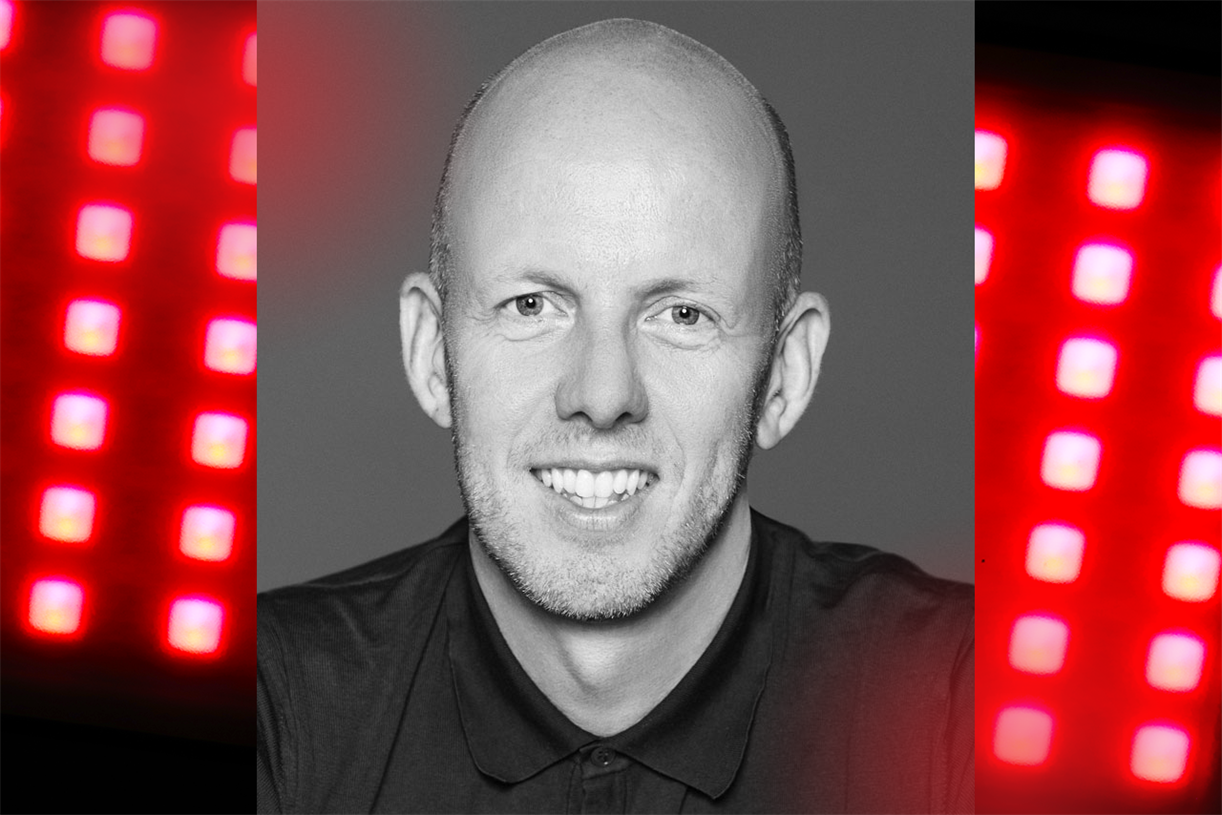4 Tips For Finding A Therapist You Really, Truly Connect With
It's so important to work with a therapist you truly trust and connect with.


Our editors have independently chosen the products listed on this page. If you purchase something mentioned in this article, we may earn a small commission.
As taboos finally melt away and the efficacy of therapeutic services begins to be embraced, more and more people are giving therapy a try. Therapy can be a transformative journey into a rich, terrifying, and beautiful inner landscape of the self. And once a person decides to begin the inner journey of therapy, the next step becomes finding the best therapist for your needs. We asked two mental health experts how to do just that.
Deciding to give therapy a try.
People may want to try therapy for so many reasons. “Most often, someone is struggling emotionally or is concerned that they may be suffering from a mental health issue–but this is not the only reason why someone may reach out for therapy,” GinaMarie Guarino, LMHC, a licensed mental health counselor at PsychPoint tells mbg. “People also seek therapy to address relationship issues, stress management challenges, loneliness, to learn how to build self-esteem, and to develop assertive communication skills. Someone may also seek therapy if they are struggling to adjust to change, for career guidance, or to learn how to manage grief and loss.”
Health Coach Certification
A best-in-class, board certified curriculum grounded in a holistic approach to healing.

There can also be more serious reasons to look into therapy: Some people’s mental health problems are severe, says Meghan Marcum, Psy.D., chief psychologist at AMFM Healthcare, and they may be struggling with suicidal thoughts or obsessive-compulsive behaviors that are getting in the way of their ability to function.
“Traumatic experiences from the past can also be a reason for seeking treatment, and we often see traumatic symptoms in veterans, first responders, and individuals who have been victims of abuse,” Marcum tells mbg. “Sometimes the referrals come from a physician or the courts to help people address addiction or eating disorders.”
No matter your reason for choosing to begin therapy, it is valid. This is a highly personal journey; remember to applaud yourself for taking this step forward to care for your mental health.
There are many types of therapy, and different modalities might be a better fit for different people depending on what their specific needs are.
“Couples therapy helps couples learn how to reconnect with each other and work through relationship issues,” says Guarino. Couples therapy, also called couples counseling or marriage counseling, can be helpful for couples going through really turbulent times or for couples just looking to deepen their connection, trust, or communication skills.
According to Guarino, cognitive therapy helps a person learn how their negative thoughts may trigger unhealthy feelings. Cognitive therapy is based on the idea that shifting the way someone thinks about an event can improve their mental state because problems may have arisen due to errors in reasoning. This type of therapy might work for people who find comfort in reasoning with their thoughts.
“Behavioral therapy uses different methods, like reinforcement, modeling, and consequences to modify unwanted behaviors,” explains Guarino. Behavioral therapy can also be combined with cognitive therapy for a modality called cognitive behavioral therapy (CBT), which identifies destructive thought patterns and uses a wide range of strategies to help people overcome those thought patterns.
Dialectical behavioral therapy (DBT)
Dialectical behavioral therapy (DBT) is a modified form of the above-mentioned CBT. “DBT teaches mindful thought-challenging skills and acceptance skills to deal with stress or hurtful emotions,” says Guarino. DBT was originally intended to treat borderline personality disorder (BPD), but it was adapted to treat other mental health conditions as well.
Solution-focused therapy (SFBT)
Solution-focused brief therapy (SFBT) is goal-oriented therapy, and past circumstances are not targeted in this form of therapy. According to Guarino, solution-focused therapy helps a person learn problem-solving and goal-setting skills. It is not for those who want to talk about past experiences.
In person-centered therapy, the therapist steps back and lets the client take the lead. This therapy model is also known as client-centered therapy, a humanistic approach in which the therapy practitioner serves as a guide for a person’s self-discovery journey.
Motivational interviewing
“Motivational interviewing is another modality that can help people who are struggling to make changes in their life, like those suffering from addiction,” says Marcum. Motivational interviewing is a method that helps resolve insecurity and ambivalence to uncover an internal spark that will help a person change their behavior. This is usually a short-term process that is empathetic and considers the difficulty in making long-lasting life changes.
Psychodynamic therapy is a form of talk therapy that helps people uncover and recognize repressed emotions and how unconscious influences are impacting their day-to-day behavior. Marcum says that psychodynamic therapy is for those who want to explore their past and how it has shaped their current thoughts and behaviors.
“Existential therapy helps people explore purpose in life, death, and freedom vs. responsibility,” Marcum says. Existential therapy often focuses on the search for meaning and emphasizes one’s capacity to make rational choices and develop to their highest potential. This kind of therapy also acknowledges that anxiety is a natural part of the human experience, which is a relief for many people who might be constantly chasing away anxiety. What if there’s a way to exist along-side it?
While many of the forms of therapy listed here concentrate on improving mental health, transpersonal therapy uses the holistic approach of addressing social, emotional, creative, and intellectual needs through the lens of spiritual healing. There is emphasis on open-mindedness, radical honesty, and self-awareness derived from both the therapist and the client.
Trauma-specific modalities
There are many trauma-specific therapeutic modalities for healing. “Trauma-specific modalities like eye movement desensitization and reprocessing (EMDR) or Accelerated Resolution Therapy (ART) assist people in working through past traumatic memories using bilateral stimulation,” explains Marcum. If you are coming to therapy to work through past trauma, know how utterly brave you are for showing up for yourself in this way.
1. Search online databases.
There are many online databases out there to help connect people with a therapist who fits their needs and preferences well. Here are a few directories where you can start your search:
“Many times referrals for therapy come from asking friends or family who they may have worked with in the past,” says Marcum. This isn’t typically a conflict of interest, due to confidentiality procedures that therapists have in place. If you feel comfortable with it, talking with loved ones and connecting with counselors via word-of-mouth is a common and effective option for finding a therapist who is personally vetted by the people you trust.
You can also ask for referrals from your primary doctor, your insurance company, or other healthcare practitioners you already work with, says Guarino.
Therapists are only legally allowed to practice in states where they have a license, so Guarino recommends looking for someone who is specifically licensed in your state. If you have a specific diagnosis you want help with, Marcum also says it’s important to find someone who has specialized training or experience in that area of mental health.
You can also look at what training and credentials they have to see how their professional expertise lines up with your needs. “It’s also a good idea to check their credentials and see if there have been any problems with their work (these are public records in each state),” Marcrum adds.
Some insurance plans cover therapy sessions, while others don’t. If you have insurance, ask your insurance company what’s covered under your plan. Your insurance company might provide a list of in-network counselors, or you can return to an online database and enter your insurance information there to narrow down your search to practitioners who accept your insurance.
If you don’t have insurance, there are still affordable ways to access therapy including looking into local social services, finding therapists that offer sliding scale options, disability benefits, and more.
Choosing the right therapist for you.
Research suggests that one of the most important factors in therapy is the relationship you have with your therapist, so make sure you find someone who you connect with–meaning they support you, and you find them to be helpful and trustworthy. “You want to seek a therapist that specializes in your specific need, and you want to ensure that you feel comfortable with the therapist you choose,” says Guarino.
According to the American Psychological Association’s research, working with a therapist you can personally relate to, feel safe with, and who will tailor treatment to your individual background (including your culture, gender, sexual orientation, religion, and more) leads to better therapeutic outcomes. A relatable therapist who shows genuine interest in you, your identity, and your unique growth process sets a groundwork of trust, so that you’ll feel safest to slowly reveal all parts of your most authentic self.
To help you figure out if a potential therapist is the right fit, Guarino notes that therapists often offer a 15-minute consultation, so you may be able to meet your potential therapist before beginning sessions. During your consultation, you can ask questions like “how can you help me address my concerns?” and “what can I expect during our sessions?” You may also ask about your financial concerns, scheduling options, and the therapist’s availability during the 15-minute consultation.
Questions to ask at your first session.
The right questions to ask at your session vary from individual to individual, but here are some common ones, according to Marcum and Guarino:
At the end of the day, this article is meant to serve as a helpful guide. Finding a therapist is a highly personal matter, and a lot of it comes down to trial and error, and fiercely listening to one’s intuition when it comes to trust and connection within a therapeutic relationship. If one relationship or modality doesn’t serve you, it’s OK to continue on your path and try something or someone else.
When a genuine connection is established within the patient-client-container, there is the potential for magic to occur in the form of being seen, heard, and permitted to express one’s heart openly and freely.

 FrankLin
FrankLin 






























